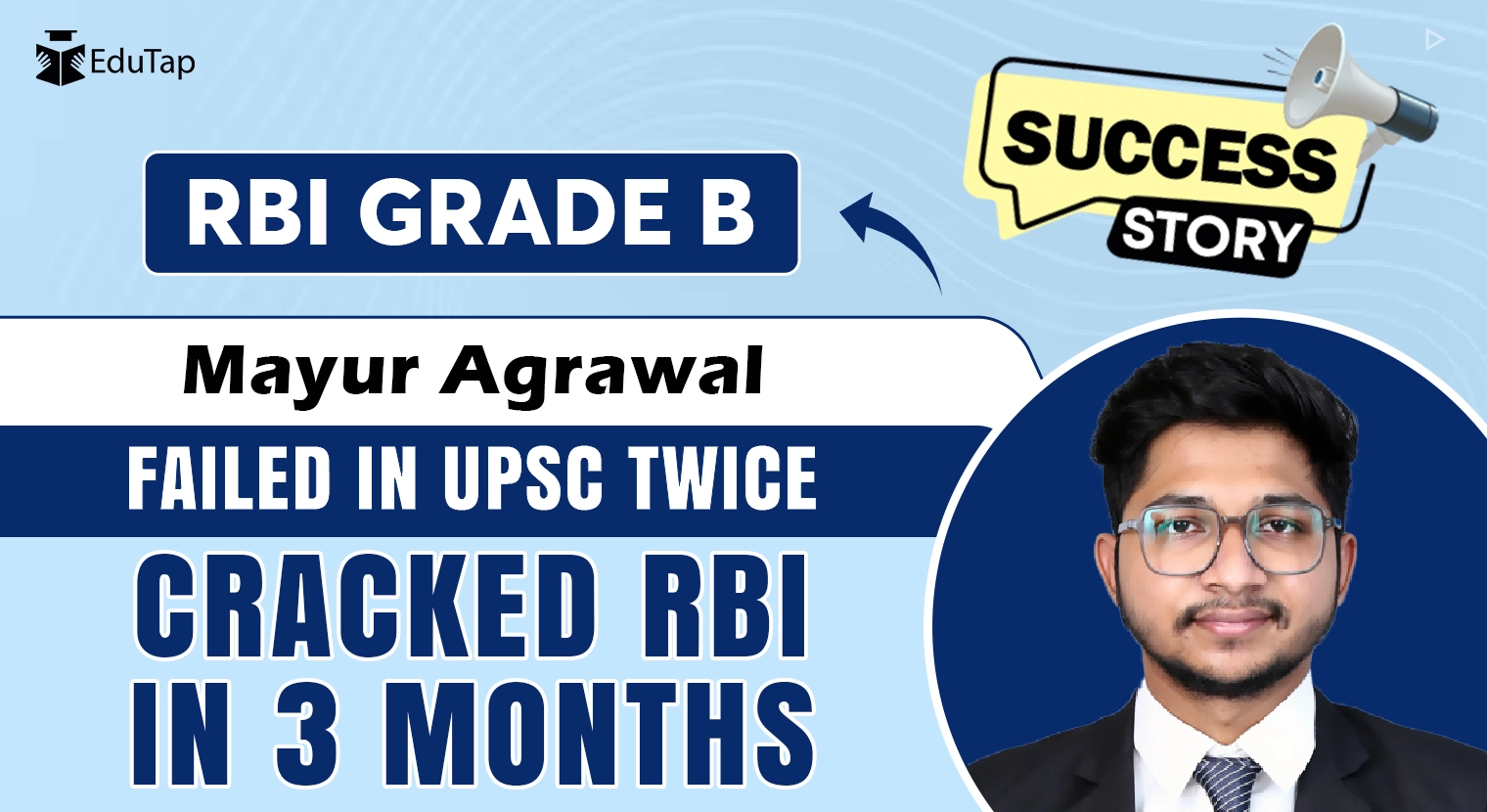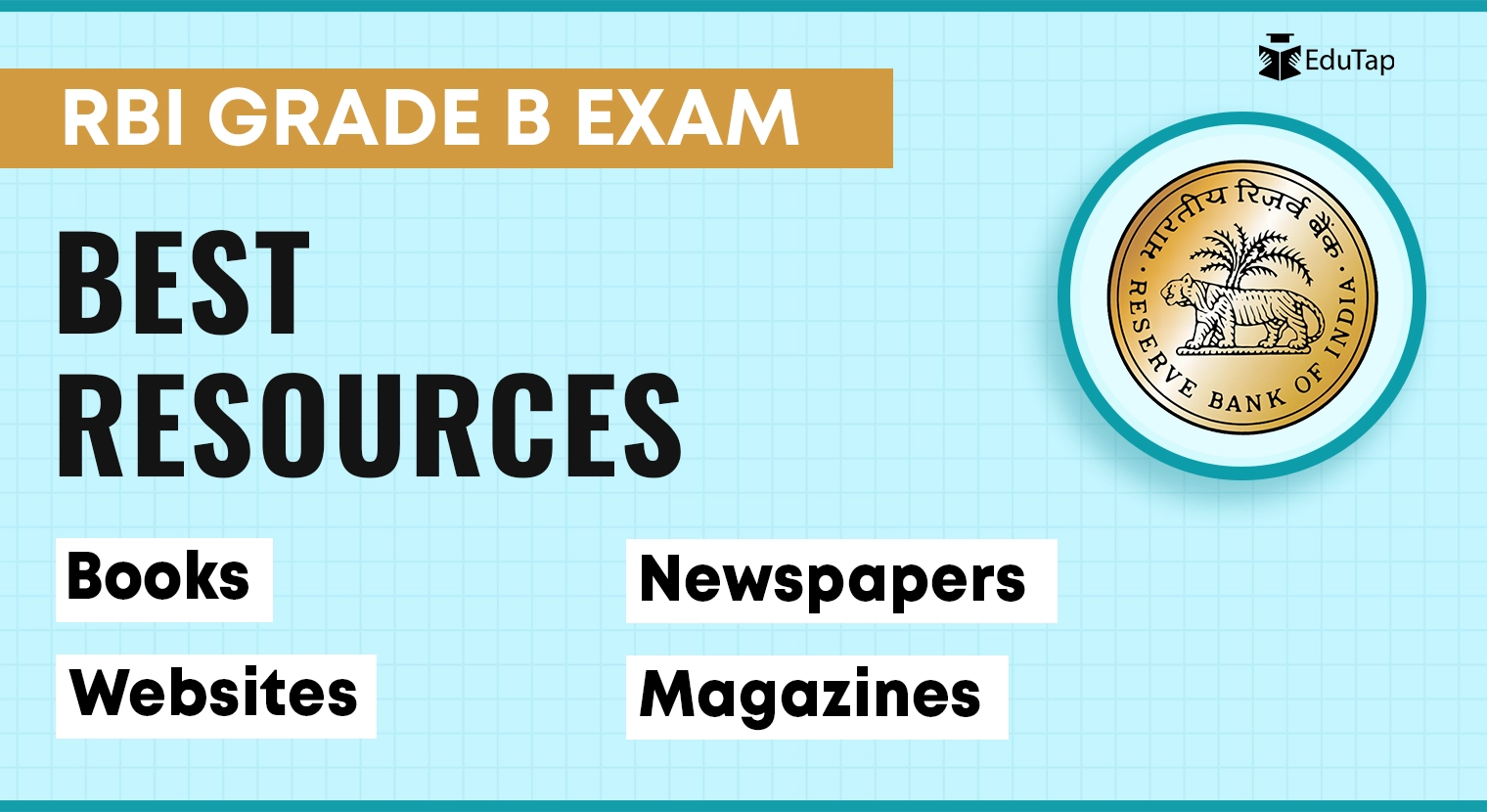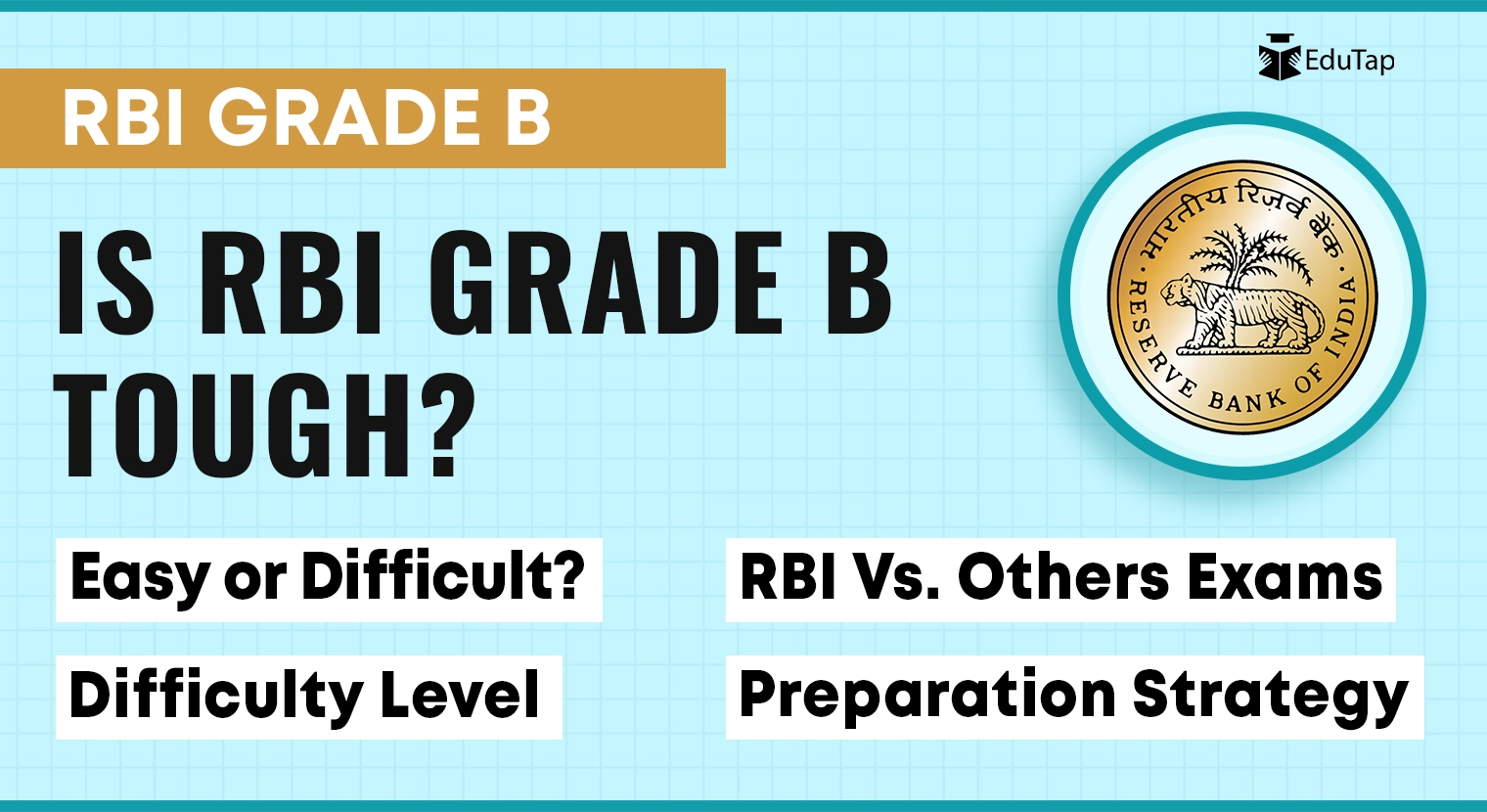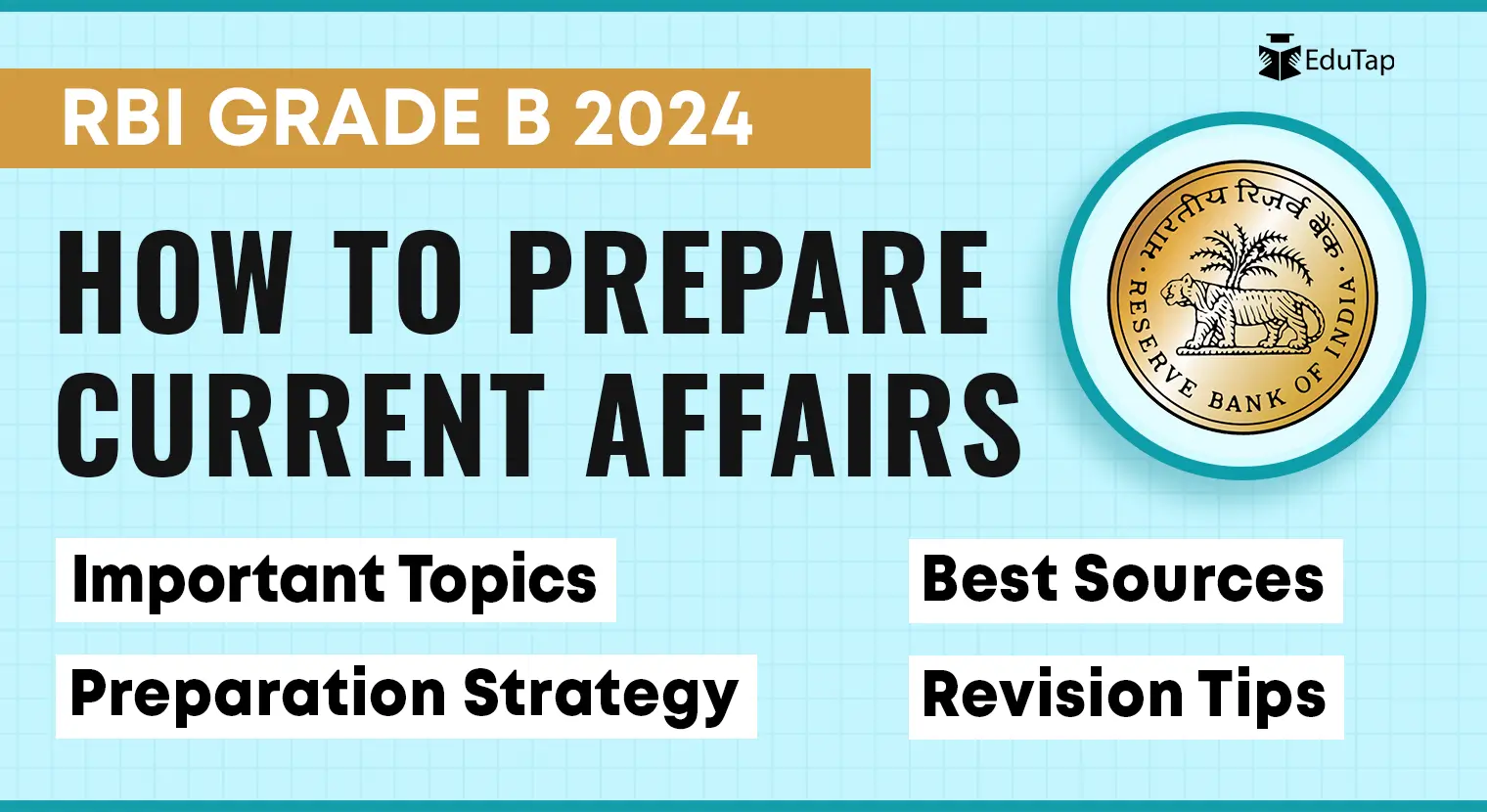This is the success story of Mr. Mayur Agrawal, who faced many challenges but still managed to crack the RBI Grade B exam in his first attempt. He started preparing for the exam after the notification was released, which left him with only 3 months to prepare.
In this article, Mayur shares his 3 months RBI Grade B preparation strategy and explains how he turned two UPSC failures into an RBI success in his first attempt.
Brief Introduction
- I am from Jabalpur, MP, a city known for its beauty and tourist attractions.
- Post Graduate in Commerce from Shri Ram College of Commerce (Delhi).
- Former UPSC aspirant (2 failed attempts).
- I was working as an Auditing Assistant at Deloitte US-India when I cleared the RBI Grade B exam in the first attempt.

My Motivation
Growing up in Jabalpur, a city nestled on the banks of the Narmada River, I witnessed the struggles of underprivileged children. This ignited a fire within me, a burning desire to make a significant difference on a larger scale.
While I knew I could pursue this goal through a private job or business, I believed that being a part of the government machinery could have a greater impact. As an officer, I have the potential to contribute to policies that can uplift millions of children and set a positive example for developing nations. The chance to create a lasting, widespread impact was what truly drove me.
I had aspired to be part of the government machinery, where I could contribute to policies that would uplift millions of children and set a positive example for developing nations.
My Journey from UPSC to RBI Grade B
Coming close but falling short by just 0.7 marks in my first UPSC attempt was truly disheartening. Discouraged, I even tore up some notes, questioning whether this path was right for me. However, my mother’s words resonated deeply: “It’s not a failure, it’s a learning.” This, along with APJ Abdul Kalam’s inspiring quote, “Dreams are not those which come while we are sleeping, but dreams are those that do not let you sleep,” rekindled my passion.
Even though I had a secure job, I wasn’t completely happy. The UPSC profile continued to fascinate me, but the RBI Grade B exam emerged as a perfect alternative, given my strength in finance and economics. This was a chance to pursue a career that aligned with my aspirations and offered the potential to make a real impact.
The UPSC profile continued to fascinate me, but the RBI Grade B exam emerged as a perfect alternative, given my strengths in finance and economics.
How I Overcame My Fears
Facing two unsuccessful UPSC attempts had left me questioning my ability to crack competitive exams. “If I couldn’t clear UPSC,” I thought, “how could I have succeeded in the RBI Grade B?”
However, I decided to turn to inspirational reads like “You Can” by George Matthew Adams and “The Monk Who Sold His Ferrari” by Robin Sharma. These books, along with the Bhagavad Gita, helped me develop the mental strength to navigate challenging situations. I used to talk to myself in front of a mirror and say, “If you are dreaming big the cost would be big but the profit would be disproportionate.”
If you are dreaming big the cost would be big but the profit would be disproportionate.
My Schedule
I managed a strict study schedule for 3 months, dedicating 15 hours daily. My background as a UPSC aspirant had already equipped me for long study sessions. For RBI Grade B preparation, I prepared a schedule for each day by dividing my entire day into three phases—active zone, inactive zone, and again active zone.
1. Active Zone (8 AM – 12 AM)
My mornings were highly productive. Since in the morning, we have high energy and concentration, I used to start with a newspaper and read about general awareness topics.
2. Inactive Zone (1 PM – 5 PM)
During my inactive zone, I found it difficult to concentrate on theory and facts after reading current affairs in the morning. So, I strategically switched gears to focus on Logical Reasoning and Quantitative Aptitude.
I started by practicing questions from areas I was comfortable with, such as speed, distance, and time problems. This helped me maintain momentum and build confidence. Then, I tackled the more challenging topics, like input/output, where I could focus on learning new concepts while practicing problem-solving techniques.
3. Active Zone (6 PM – Till I Call It A Day)
During the first 15 days of my active zone, I focused on building a strong foundation in areas of the RBI Grade B exam syllabus that were new to me compared to my UPSC preparation. As a commerce student, my foundation in Finance and Economics was already solid.
This advantage helped me spend less time on foundational concepts and focus more on topics like Indian economic history and industrial policies that require deeper understanding. So, I dug a little deeper into these topics and prepared some notes out of it.
Dividing my day into 3 zones (active, inactive, active) allowed me to prioritize topics strategically and significantly increased my efficiency.
My Sticky Notes
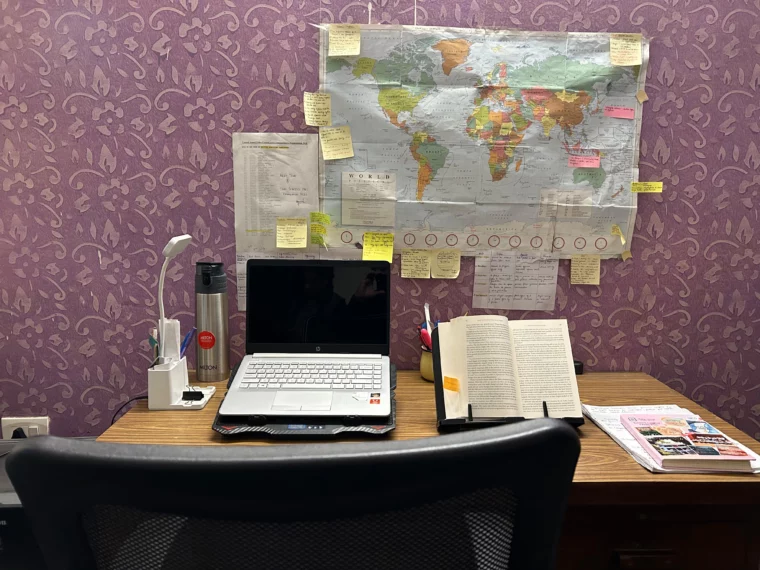
The sticky notes you can see around my desk are for two purposes:
- The small sticky notes are related to questions on specific locations in the UPSC exam.
- The larger notes target key areas that I found myself forgetting repeatedly.
For example, I had trouble remembering the different types of money supply (M1, M2, M3, etc.) So, I created a note about it, stuck it on my map, and reviewed it multiple times a day to solidify the information.
In addition to the topic reminders, I also utilized these sticky notes to create mini-weekly schedules. On these schedules, I wrote down specific tasks for each day, such as “Cover X topic today.” This approach kept my goals clear and helped me stay on track throughout the week.
To ensure flexibility, I also kept some buffer time at the end of each week. This allowed me to address any leftover topics effectively.

My RBI Grade B Experience
While I encountered unexpected challenges during Phases 1 and 2 of the RBI Grade B exam, the interview took an interesting turn.
1. RBI Grade B Phase 1 Experience
The monsoon season presented an unexpected hurdle during my RBI Grade B Phase 1 exam. The rain drenched me, and I felt a slight chill as I sat down for the two-hour paper. Despite these initial concerns about managing my physical comfort, I was able to overcome them and focus on giving my all in the exam.
2. RBI Grade B Phase 2 Experience
During the RBI Grade B Phase 2 exam, I encountered an unexpected challenge. The screen brightness was excessively high, making it difficult to read the questions. Unfortunately, when I requested for adjustment, I was informed it could not be done after the exam had begun.
To counteract the discomfort and potential fatigue caused by the screen brightness, I took paracetamol after the first paper. While I was initially worried about drowsiness affecting the second paper, I opted for a different strategy. I ate some chocolates to combat the tension and stress, allowing me to maintain focus during the remaining exam time.
3. RBI Grade B Interview Experience
Unfortunately, I hadn’t found time to prepare for my favorite subject for the interview. I was worried that the panel might ask about it, and with financial management being my usual go-to topic, the lack of recent preparation caused some anxiety. Thinking I had ample time before my 4:30 PM interview, I took my laptop and started typing down everything I could recall about financial management. However, to my surprise, upon entering the room, the interview panel bypassed the typical questions such as “introduce yourself” and asked about my favorite subject.
Phase 2: 182.5 marks
Interview: 48 marks
Overall Marks: 230.5 marks
My RBI Grade B Phase 1 Strategy
Before jumping onto my strategy, I want to share that I used to believe that Mayur Agrawal (me) and MCQs are very opposite polls. This was because my coaching institute used to give a mix of Maths MCQs and descriptive questions in 11th and 12th grade. I was really comfortable writing descriptive answers but found it difficult to handle MCQs. So this fear of MCQs accumulated day by day, and it intensified more when I was not able to clear the Pre of UPSC.
Below is my subject-wise preparation strategy for the RBI Grade B exam:
RBI Grade B Quant Strategy
I scored 6.75 Marks in Quant. I planned for 13 questions in quant (as my mock test suggested that 13 is a good limit for you) but I could only attempt 8 questions. Analyzing the cause, I realized long, description-based questions threw me off balance, preventing me from attempting as many questions as planned.
I focused on selecting topics that were less time-consuming and where I already possessed a strong foundation. This allowed me to concentrate on areas that would guarantee points within the time constraint rather than attempting every topic.
I focused on selecting topics that were less time-consuming and where I already possessed a strong foundation.
RBI Grade B Reasoning Strategy
For Reasoning, I followed a similar approach to Quant and scored 16 marks.
RBI Grade B General Awareness Strategy
General Awareness is a critical component of the RBI Grade B Phase 1 exam, with 80 questions to cover in a limited time. Based on my analysis of past year trends, I identified a pattern that the majority of questions were asked from the last 3 months of current affairs.
To optimize my preparation, I concentrated on the current affairs from the past three months. I noted down the facts and figures from reliable sources like the Press Information Bureau (PIB). Additionally, I covered the Economic Survey and Union Budget. I utilized Evernote, a note-taking app, to create dedicated notebooks for each of these topics, allowing for efficient revision.
After completing the 3 months of current affairs, I extended my preparation for two more months. Attending EduTap’s current affairs marathon sessions by Gurkirat sir and Kritika ma’am proved highly beneficial in staying updated and solidifying my understanding.
Important Tip: It is important to skim information from any resource as per the need of the examination. Just don’t go and make notes of every other thing. Avoid the pitfall of creating extensive notes on everything you encounter. This approach can overwhelm you during revision.
Attending EduTap’s current affairs marathon sessions by Gurkirat sir and Kritika ma’am proved highly beneficial in staying updated and solidifying my understanding.
RBI Grade B Mock Tests Practice
In order to test my RBI Grade B preparation level, I gave sound 7-8 mock tests with a timer and I used to practice 30 questions daily (also with a timer). After each mock test, I conducted a thorough analysis of my performance to identify areas for improvement. I noted down any mistakes I made and worked on solidifying my understanding to avoid making those mistakes in future tests.

My RBI Grade B Revision Strategy
I established a dedicated slot within my daily schedule for revision. I found that my most active time was in the evening, specifically between 5 PM to 8 PM. During this dedicated period, I focused on revisiting facts and figures that I had prepared in my Evernote notebooks. I received each topic 2 to 3 times to solidify this information in my memory.
I established a dedicated slot within my daily schedule for revision.
My RBI Grade B Strategy for Time Management
For general awareness, I believe that the better you prepare, the better you perform in general awareness. The given time was not at all enough to go through all the 80 questions. I prepared in a manner that I used to see one word in the question and mark the correct answer. This approach proved highly effective for me.
For Quant and Reasoning, you need to understand that you can’t attempt all the questions. You need to mark some key areas in which you are comfortable. You need to find the questions in the exam and just solve them. Don’t meander around those questions which you are unsure about and skip them in the first iteration.
For general awareness, I believe that the better you prepare, the better you perform in general awareness. For Quant and Reasoning, you can’t attempt all the questions and need to find the questions you are comfortable with.
My RBI Grade B Phase 2 Strategy
My Phase 2 score was 182, which was just around the cut-off. Here’s the strategy I used to achieve this score in RBI Grade B Phase 2:
RBI Grade B Finance and Management Strategy
Being from a commerce background, my top priority was Finance and Management. Also, I saw EduTap’s YouTube video explaining that if you prepare well for FM, you can score 70+ marks, and I did score 74.75 in FM.
For FM, I had the entire notes prepared because I chose the commerce and accountancy subjects for my UPSC. My existing UPSC knowledge base served as a solid starting point for my RBI Grade B exam preparation. To further solidify my understanding and address any knowledge gaps, I strategically utilized online resources.
Since preparation time was limited, I adopted a strategic approach to maximize efficiency. Instead of covering the entire FM syllabus, I conducted a thorough analysis of the past year’s RBI Grade B exams to identify frequently asked topics. This data-driven approach allowed me to prioritize and focus my studies on these high-yield areas within the syllabus, ensuring I utilized my limited time effectively.
I saw EduTap’s YouTube Video explaining that if you prepare well for FM, you can score 70+ marks, and I did score 74.75 in FM.
RBI Grade B ESI Strategy
For ESI preparation, understanding the basic framework surrounding the subject is crucial. For example, if something is mentioned, like a change in industrial policy, so instead of going with the current affairs, you should know the basis first. I established a rule to understand the background first, then go with the current affairs.
I also read Vision IAS magazines for UPSC preparation and I just skimmed out those topics that were relevant for the RBI Grade B examination.
For example, there was a report on currency and finance. I read an overview of that report from Vision IAS magazine and made handwritten notes from it. And the exact same question was asked in the exam. I scored a total of 56 marks in the ESI paper.
RBI Grade B Descriptive Writing Strategy

While reading for the theory, I used to gather facts and figures of important topics that are relevant for the examination and make notes, as you can see in the image above. I practiced using them as examples again and again in my descriptive answers.
During my descriptive preparation, I came across a valuable tip from EduTap’s video tutorials. They recommended using Notepad for essay writing instead of Microsoft Word. Since there’s no automatic spell-checking in Notepad, it encouraged me to focus on accurate typing and proper spelling from the outset.
I came across a valuable tip from EduTap’s video tutorials to use a Notepad for essay writing instead of Microsoft Word to avoid auto spell-check.
RBI Grade B Descriptive English Strategy
I scored 51 marks in Descriptive English, and here are the strategies that helped me achieve that result:
1. Essay Preparation
For the essay section, I analyzed past year trends to identify any recurring themes or topics. This analysis led me to forecast approximately seven to eight potential essay topics. I proactively prepared content for each of these anticipated topics, focusing particularly on current and relevant issues. Fortunately, my efforts paid off, as the actual essay topic in the exam aligned with one of my prepared subjects.
2. Precis Preparation
For precis writing, I found Narveer Sir’s video tutorials exceptionally helpful. His emphasis on omitting specific facts and maintaining a neutral, general tone really helped me write an effective precis.
3. Typing Speed Improvement
While some candidates practiced typing through audio transcription or dictation, I opted for a different approach. Recognizing the importance of efficient typing for the exam, I implemented a unique strategy. I utilized WhatsApp Web, the web-based version of the messaging app, to engage in casual conversations with friends. This method allowed me to significantly improve my typing speed practically and engagingly, ultimately benefiting me during the exam.
Important Tip: My suggestion for fellow aspirants like you is to practice typing your answers and, if possible, get feedback from a qualified person. Their expert guidance can pinpoint areas for improvement in structure, clarity, and argumentation, ultimately strengthening your writing and maximizing your essay score.
I found Narveer Sir’s Essay and Precis video tutorials exceptionally helpful.

Interview
I scored 48 marks in the interview. I prepared a list of 40-50 questions based on my biodata and I answered them within a time of one month. So, I prepared those questions and went with the technical ones based on current affairs.
Before the interview, I was a little bit nervous and curious. However, I resisted the urge to ask the candidates coming out about their experience. It’s better to let them go and simply relax.
The entire day, I was reviewing the monetary policy report because the monetary policy review just happened. I read the Business Standard newspaper, which really helped me in the interview. The panel asked me to frame a question on economics and answer it myself. So, I used the article from the chief economic advisor that I just read from the newspaper’s editorial section. Again, they asked me about my favorite subject, which was financial management.
If you aren’t able to answer, just say very firmly that sir I am really sorry for this I should have read this but I am sure that I’ll go back after the interview and complete this and understand this.
Here is a video in which Mayur Agarwal explains his RBI Grade B preparation strategy.
Conclusion
Mayur Agarwal’s success story showcases the value of strategic planning, effective organization, and focused preparation. By leveraging prior knowledge, adopting efficient study techniques, and maintaining a positive attitude, he cracked the RBI Grade B exam in only 3 months in his first attempt. While this is a specific strategy, the key takeaways provide valuable insights for anyone preparing for competitive exams. Remember, adapting these strategies to your strengths and weaknesses is crucial for maximizing your own chances of success.
Best of Luck!
